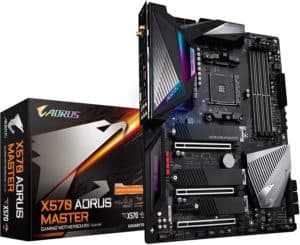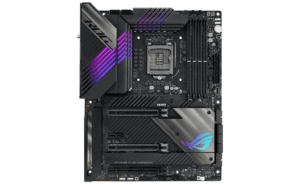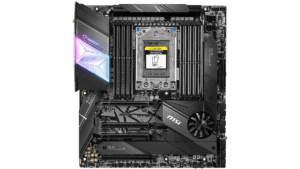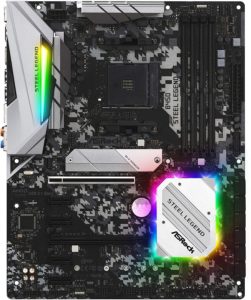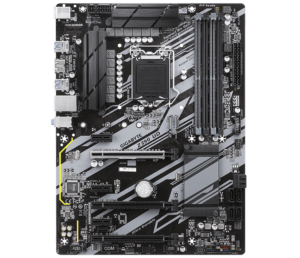Best Motherboard for Windows 11 in 2025
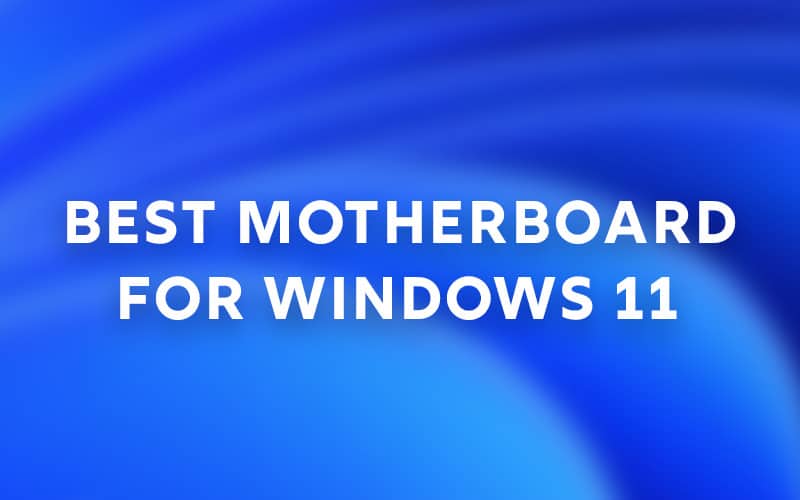
Table of Contents
Motherboards, the heart, and soul of your PC, are currently going to be in hot demand for the upcoming Windows 11 operating system release. TPM chips are becoming mandatory and while most CPUs and motherboards do come with them bolted on in some fashion – that needs to be turned on in the BIOS – you will want to make sure you’re secure in acquiring Microsoft’s next operating system.
With this guide, we’ll be providing you with the definitive answer for what the best motherboard is for Windows 11 both for AMD and Intel users so that no matter if you’re Team Red or Team Blue, you’ll be covered for the next Microsoft OS.
Products at a Glance
How we picked
There are two things we’re considering here when choosing these motherboards:
The latest support for the newest CPUs, with some overhead for futureproofing as we suspect they’ll all receive updates to support the refresh when it inevitably happens. With this in mind, it’s mostly because Microsoft has all but confirmed that they’re ditching every CPU below the 8th Gen Intel and 2nd Gen Ryzen.
But to prevent folk who can’t exactly hop on board the latest, we’ve included two lower budget options that are already in their futureproofing stage.
With the fear of e-waste aside, the CPUs that are supported on these boards should, in theory, all come with options for software TPM (fTPM for AMD and Intel’s PTT) so you won’t have to rely on acquiring the now scalped physical TPMs.
Speaking of the physical: a majority of these boards will have a TPM slot on them when we can find them. Some manufacturers appear to have ditched physical in favor of their software-based TPM, but if it’s available, it’ll hopefully be on the list.
Product Reviews
- PCIe 4.0
- TPM Header
- Great overall board for any situation
- Three M.2 storage slots
- USB 3.2 Gen2 Type-C
- Rev 1.0 is still in circulation
Team Red, AMD, is currently killing it on the CPU front and I personally will always recommend them over Intel at this point.
The value for performance is outstanding, especially when it comes to being an all-rounder. Content creation and gaming, AMD excels in the current age. So of course to pair with all these, we’ll want to have a top-end motherboard to match with the absolute unit you’ve got inside.
GIGABYTE’s AORUS MASTER rev. 1.2 is a killer board. It supports AMD Ryzen 5000, as well as 1st through 3rd gen Ryzen CPUs.
This is ideal for those looking to futureproof, as the PCIe slots are the latest 4.0 variants, perfect for both your storage in the three M.2 storage slots for exquisite speeds, but also will give you enough headroom for when graphics cards come back in stock on a more frequent basis in the not too (hopefully) distant future.
You’ll be able to activate PCIe 4.0 if you run 3rd generation Ryzen, but they’ll slow down to 3.0 speeds if you’re on 2nd gen.
I’m a bit of a weirdo when it comes to motherboards, so it’s not usually how they look that does it for me, but the sheer amount of connections on this board is wild. USB 3.2 Gen2 Type C is a mouthful to say, but is incredibly quick, making external SSD drives a perfect place to bank games or content without worrying about dips in speed during transfers or access.
But speaking of future-proofing, there’s even support for WiFi 6 and Bluetooth 5 for those that require a wireless connection. This is just a handy thing to have, even if you are sensible and run either ethernet through the house or overpower plugs.
This is a powerhouse of both features and future-proofing, but more importantly, has the option for a physical TPM chip, even if your Ryzen comes with it.
- Excellent heat management
- Support for really quick RAM
- Top tier for those on Intel
- PCIe 4.0
- Thunderbolt 4
- TPM Header
- Expensive
- Overkill for a lot of users
- Ugly ROG RBG
Okay, yes, we need to recommend all you out there who are dedicated to Intel. That or you just really like Celeron processors. You do you, I won’t judge.
The ROG Maximus XIII HERO is a beast, however. While it sports many recognizable and standard features for modern motherboards, it does feature one of my favorite I/O connections: Thunderbolt. (Don’t ask, I just like these things.)
Thunderbolt 4 is basically the perfect addition for people who need to transfer or access stuff at speeds that are just ludicrous but don’t really want to invest in M.2 drives once the machine is closed up.
Thunderbolt 4 has also been updated to support much longer cables (go look at the length of some bundled Thunderbolt 3 cables and tell me how some of them were usable), as well as taking the relief off your HDMI or Display Ports as they can now support up to 2 4K monitors at once, which if you’re in the game for multiple monitors, it seems this board has you covered.
If you’re all about power though, it does support up to 128GB of RAM, so those in the editing or creative business will never have to worry about potential overhead is limited.
Of course, there’s room for four M.2 drives, as well as support for 11th and 10th generation processors.
Now this board does apparently have a header connection for the chip, but of course, isn’t included. We’ve never needed niche hardware like this until now. So, you’ll want to activate the included on your CPU – make sure it has it – before you get ready to install Windows 11.
- Supports Threadripper with excess I/O
- Future-proof
- Wi-Fi 6 and Bluetooth 5 for fast wireless interactivity
- 10G LAN
- 256GB of RAM supported
- Expensive
- Not really intended for anyone outside of professionals
More. MORE! MORE!!
The Threadripper series from AMD is quite honestly, overkill for a majority of folks. It is filled to the gills with pure, unbridled power that it has become a go-to for video editors and 3D animators, as it – as the name implies – rips through content generation like nobody’s business.
There’s a lot of boards out there, but for Threadripper (and Intel’s higher-end CPUs) you need a TRX40 board. They’re much larger than your typical board, but ultimately it’s because they pack a lot of punch.
This board is kitted out with a disgusting amount of ports and connections, namely a TPM 2.0 header for you to fit one of the two TPMs that MSI makes. Of course, being a modern CPU, always check your BIOS for fTPM that might be hidden away in an advanced menu somewhere.
On the back is multiple USB 3.2 Gen2 USB A and C ports, with the holy grail of a 10 Gigabit LAN port for those who happen to require ultra-fast server transfers.
This board and CPU won’t exactly fit a lot of criteria for those out there, but we can’t leave the professionals out in the cold. If you are in the industry that uses Nuke or Boris FX on a regular basis, you’ll be happy to know that these RAM-hungry programs can satiate with 256GB of RAM.
PCIe 4, 3 M.2 slots, and 4 slots for graphics and accessories are also included, in case you needed to load it up with more stuff.
- An updated BIOS will give access to 3rd Gen Ryzen
- Tonnes of I/O for accessories
- Perfect for entry level and esports focused builds
- Onboard TPM header
- BIOS Updates appear to be hit and miss between users
- PCIe 3.0 is slowly being phased out
So while this board isn’t as feature-rich as those listed beforehand, it’s still a really impressive bit of kit for a much lower price. With an update, it can even support Ryzen 3000 and 5000 series CPUs, so there’s not much of a worry about being ‘entirely’ left behind.
With 2 PCIe 3.0 slots, you won’t be hurting too much for accessories, but the fully fleshed I/O and support for M.2 drives is really going to keep you going for a while.
For those on a budget, this a perfect entry-level board to build around in 2021, especially for those who don’t particularly push their gaming side too hard. Get a real nice 1080p or 1440p monitor and reap the rewards of a far cheaper gaming PC, that combined with Ryzen will absolutely be able to do some content creation work.
Of course, Ryzen 2nd Gen is supported by Windows 11 and the onboard TPM header is going to allow you to rest easy if you can’t activate it via software.
- Quite cheap
- Able to hold all modern components
- TPM Header
- PCIe Gen 3 is still real quick
- M.2 drive for fast loading
- 128GB RAM Capacity
- No USB-C
- Overall I/O is limited
- HDMI is stuck on Ver 1.4
- Will probably be too old after 2022
For an incredibly low entry price, you can forgive the omission of USB C on the back of the machine, but the cash saved can be used to fit the additional PCIe slot with an expansion card filled with USB-C ports.
This board is fairly generic, it is what it is, nothing to really write home about, but it’ll do the job and it’ll do it on both 8th and 9th generations of Intel CPUs.
You will however want to avoid a particular subsect of the i9 CPUs if you decide to go the 9th generation route, as a few of them appear to be missing for whatever reason.
As always, there’s a TPM Header on here too.
Buyers Guide
There are some key considerations you’ll want to look into when finding the best motherboard for Windows 11. Here’s what we’d recommend factoring in.
CPUs might already be TPM equipped
You really should double-check if your CPU supports a software TPM, you might not need to worry at all about getting a TPM.
Be wary of motherboard sizes
We’ve covered this before, but you should check what motherboard you currently have or what your case can fit as buying the wrong motherboard for your case will be a really bad (and often expensive) mistake to make.
Do I really need a motherboard with a TPM header on?
Not really, just make sure the CPU that you’re going to be placing in the motherboard has a software TPM (fTPM for AMD and PTT for Intel). Most modern CPUs do support this feature, but it’s always best to ensure that you’re going to meet the specifications.
Do I need to get a TPM that matches my board?
Yes, it’s for the best really. We have more details on TPMs elsewhere on the website, but you’ll more often than not be required to just acquire one that matches your brand.
If I buy a new motherboard, can I keep my old components?
Sure can! Once you’ve replaced the motherboard refit everything into its slot and off you go!
Make sure your parts match specification, don’t be putting DDR3 RAM in DDR4 slots, and make sure you have a Windows 11 supported CPU going back in too.
Can I just upgrade my CPU for Windows 11, instead of the motherboard?
Yes! If your motherboard doesn’t have a TPM Header, but you know the CPU you want is going to have a software one, you can absolutely just swap those out after making sure they’re right for your motherboard. A board from 2017 is unlikely to support modern CPUs from Ryzen 3 or Intel 10th gen for example.
Our Verdict
AMD holds my heart and most of us here at PCGuide (all our PCs actually seem to run on Ryzen at this point), with killer performance in creative spaces and the ability to play current games impossibly well, it’s a no brainer to go for the X570 AORUS Master (revision 1.2!).
As with any and all PC parts, if you’re upgrading or start anew, there are only a few pieces in the machine that you really shouldn’t skirt on:
Your motherboard; CPU; SSD and hard drive.
These are probably going to see RAM sticks come and go, graphics cards hot-swapped, and PSUs fry. So ensure you get on this, even with a hefty price tag, you won’t regret it.


